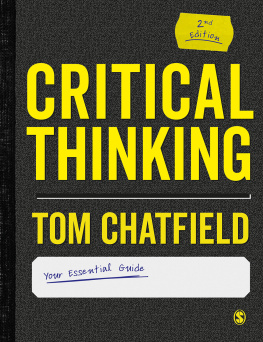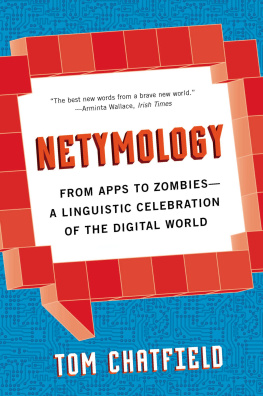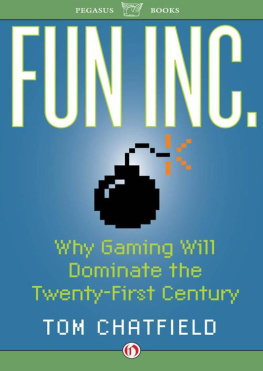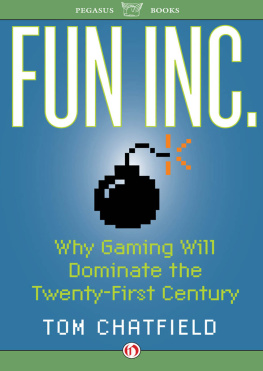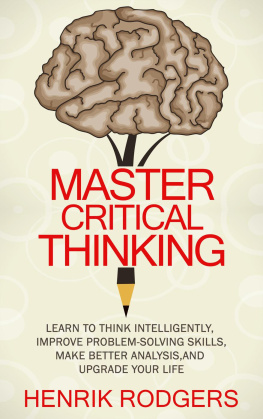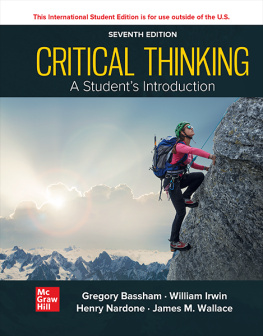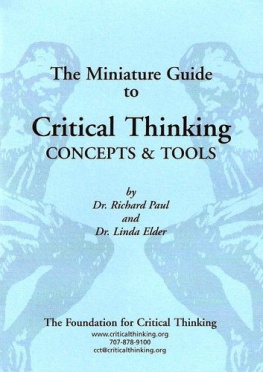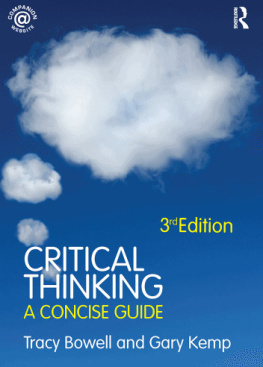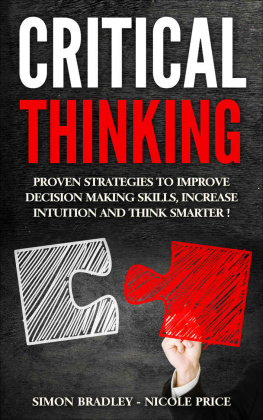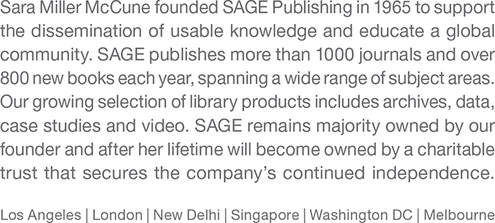SAGE Publications Ltd
1 Olivers Yard
55 City Road
London EC1Y 1SP
SAGE Publications Inc.
2455 Teller Road
Thousand Oaks, California 91320
SAGE Publications India Pvt Ltd
B 1/I 1 Mohan Cooperative Industrial Area
Mathura Road
New Delhi 110 044
SAGE Publications Asia-Pacific Pte Ltd
3 Church Street
#10-04 Samsung Hub
Singapore 049483
Tom Chatfield 2022
Apart from any fair dealing for the purposes of research, private study, or criticism or review, as permitted under the Copyright, Designs and Patents Act, 1988, this publication may not be reproduced, stored or transmitted in any form, or by any means, without the prior permission in writing of the publisher, or in the case of reprographic reproduction, in accordance with the terms of licences issued by the Copyright Licensing Agency. Enquiries concerning reproduction outside those terms should be sent to the publisher.
Library of Congress Control Number: Available
British Library Cataloguing in Publication data
A catalogue record for this book is available from the British Library
ISBN 978-1-5297-1853-9
ISBN 978-1-5297-1852-2 (pbk)
Editor: Jai Seaman
Assistant editor: Hannah Cavender-Deere
Assistant editor, digital: Mandy Gao
Production editor: Ian Antcliff
Copyeditor: Sharon Cawood
Proofreader: Emily Ayers
Indexer: Elizabeth Ball
Marketing manager: Catherine Slinn
Cover design: Shaun Mercier
Typeset by: C&M Digitals (P) Ltd, Chennai, India
Printed in the UK
At SAGE we take sustainability seriously. Most of our products are printed in the UK using responsibly sourced papers and boards. When we print overseas we ensure sustainable papers are used as measured by the PREPS grading system. We undertake an annual audit to monitor our sustainability.
Thanks and acknowledgements
First, if youre reading this thank you, and I hope you enjoy the book. Please do share any thoughts, comments, queries, corrections or objections with both me and other readers via the hashtag #TalkCriticalThinking or look me up online and get in touch.
Second, a book like this doesnt happen without the help, decency and skill of a lot of people. Writing it has not been easy, and it couldnt have happened without them.
My darling wife, Cat, and children Toby and Clio have both been a constant support and have put up with me locking myself in my office for many, many days of writing. Thank you for everything, with all my love.
It is a remarkable privilege to be published by SAGE, and to have found good friends there as well as colleagues: Ziyad, Kiren, Martha, Katie, Mark, Jai, Catherine, Amy, Katherine, Timo and many others with whom I have spent some of the happiest and most stimulating times of my recent years. My editors for this book, Mila Steele and Jai Seaman, have been expert, enthused and tolerant throughout and not a little brilliant. This beautiful design is nothing to do with me, and everything to do with the talents of Ian Antcliff (production manager) and Shaun Mercier (creative designer). And none of this would have happened without the passion and friendship of Ziyad Marar in particular. I hope I have justified your belief in me.
The Oxford Internet Institute provided an academic home and sanctum to me for much of the writing process, and I am especially grateful to Vicky Nash for making my time there both possible and pleasurable, and to Luciano Floridi for works and words that inspired my thinking. Oxford itself was a second home to me, thanks to the generosity of Judith and Lawrence Freedman, to whom I owe a great debt of friendship and gratitude.
I have been privileged over the last few years to enjoy friendships and conversations with people who inspire me. Nigel Warburton, in particular, has been a generous friend and role model, both in person and on paper. Colleagues I am proud to know through the School of Life in London continue to enrich my thinking and feeling life Roman Krznaric, Philippa Perry and John-Paul Flintoff while others, including Julian Baggini, Jules Evans, Jonathan Rowson and David Edmonds, have given more than they might realize through their work and examples.
Preface to the second edition
Youre holding a fully revised and updated version of a book that, to my surprise and delight, has found thousands of readers around the world since its first edition. In revising it, Ive tried to focus, above all, on the principles I recommend to others: clarity, honesty and relevance. That is, Ive tried to update and improve the lucidity and accuracy of both minor and major points throughout, while putting a particular emphasis on the 21st-century context of technology, information systems and digital culture. The result is evolutionary rather than revolutionary but, I hope, a better and more rounded read throughout.
I also owe some sincere thanks to those readers whove got in touch to suggest specific corrections and improvements to the first edition, including Rebecca R. Soulen, Bennett McNulty, Jeff Larson and R.E. Ongoco, not to mention dozens of others who have shared broader thoughts and responses with me or simply let me know that this book was useful to them in some way.
Writing a book that people have found useful is, without a doubt, one of the greatest joys Ive known as an author. For thats what this book is: a tool that, I hope, will help you pursue your own studies, thoughts and aspirations with a little more confidence.
Once again, then: thank you for reading, and the best of luck with all that lies ahead.
Welcome to the book!
What this book will help you to do
Welcome! Whether you are reading this book for work or pleasure, as part of your studies or as an extension of your professional skills, there are two obvious ways in which critical thinking is likely to be important and useful:
- 1 Helping you to become a selective and critically engaged consumer of other peoples work and sources of information.
- 2 Helping you to produce better work yourself, and to express your knowledge and ideas more clearly and effectively.
As a discipline, critical thinking traditionally places a great deal of emphasis on these principles, alongside learning to engage critically with arguments and explanations: with the ways in which both you and others seek to explain how things came to be the way they are, and why certain beliefs and courses of action are reasonable.
All of this remains important but I am also interested in two further areas in which a critically informed approach is becoming more and more significant:
- 3 Helping you to manage your own time and attention effectively, while becoming more aware of the ways in which thinking itself tends to be biased or flawed.

